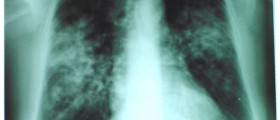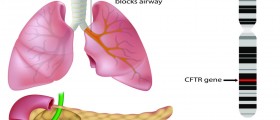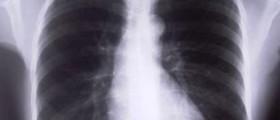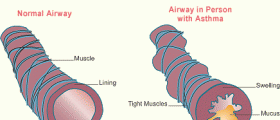
Chronic fibrosing mediastinitis is a rare and benign disorder caused by rapid growth of a cellular collagen and fibrous tissue within the chest. Fibrosing mediastinitis is also known under a number of other names including sclerosing mediastinitis or mediastinal fibrosis. Mediastinitis is usually described as inflammation of the tissues in the mid-chest. Acute mediastinitis is often caused by bacteria, while chronic mediastinitis includes fibrosing of the tissues, caused by long-lasting inflammation of the mediastinum. Fibrosing is actually formation of the excess fibrous connective tissue in an organ. This process often obliterates the architecture of the underlying organ and changes the tissue.
Symptoms of chronic fibrosing mediastinitis
Mediastinitis usually manifests in a range of symptoms and some of them can be very severe. If it occurs as a result of bacterial infection, it commonly presents with fever, high pulse or postoperative wound infections. One of the prominent symptoms of fibrosing mediastinitis is sterna pain and progressive redness in that region of the body. Chronic fibrosing mediastinitis is usually diagnosed by radiology, which employs the use of imaging to both diagnose and treat disease visualized within the human body. The disease manifests by constricting blood vessels or airways in the mediastinum. This effect causes superior vena cava syndrome or pulmonary edema, as well as obstruction or compression of the central airways, esophagus, pulmonary veins or arteries and superior vena cava.
Causes of mediastinal fibrosis
Mediastinal fibrosis usually occurs as a late and most severe complication of histoplasmosis. In most cases, fibrosing mediastinitis is diagnosed following a prior granulomatous disease, typically histoplasmosis, or tuberculosis and radiation therapy. One of the most probable hypotheses about mediastinal fibrosis is that it occurs as an abnormal immunologic answer to antigens released by the soil-based fungus histoplasma capsulatum. Histoplasmosis is a disease caused by this fungus, and it is usually mentioned under the names Cave disease, Darling’s disease, Ohio valley disease, Reticuloendotheliosis or Spelunker’s Lung. The disease is very serious; it usually affects the lungs and may even be fatal if left untreated. Symptoms of histoplasmosis are often similar to those of flu. The disease manifests in a range of respiratory symptoms, even though the chest x-ray images are usually normal. Chronic histoplasmosis is similar to tuberculosis and may even affect multiple organ systems causing death, in left treated. Mediastinal fibrosis is relatively rare disease and usually mentioned as a complication of histoplasmosis. The resulting disorder causes proliferations of collagen, fibrous tissue and inflammation of the cells in the space between the lungs.

















Your thoughts on this
Loading...